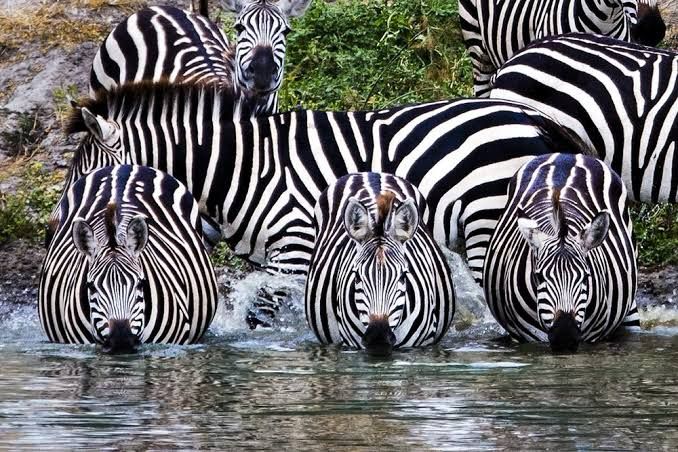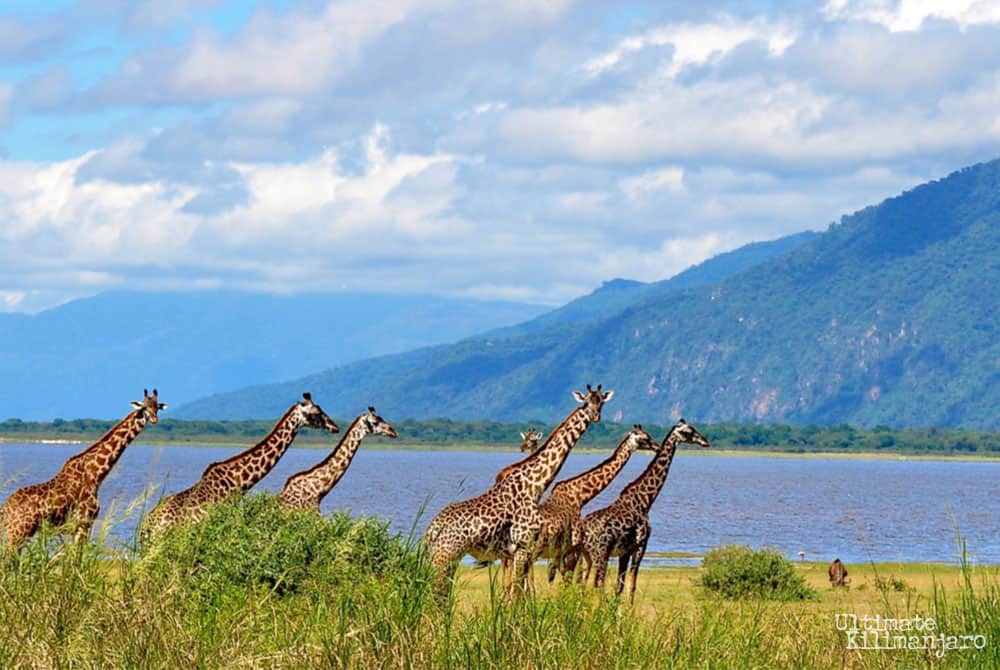Detailed Information
Itinerary
Gallery
Book
LAKE MANYARA
Lake Manyara National Park is a stunning wildlife reserve located in northern Tanzania, nestled between the Great Rift Valley Escarpment and Lake Manyara itself. Here are details about Lake Manyara National Park:
Location: Lake Manyara National Park is situated in northern Tanzania, approximately 126 kilometers (78 miles) southwest of Arusha. It covers an area of about 330 square kilometers (127 square miles).
Landscape: The park’s landscape is incredibly diverse, encompassing lush groundwater forests, acacia woodlands, open grasslands, and the alkaline Lake Manyara. The park’s most prominent feature is the dramatic Great Rift Valley Escarpment, which provides breathtaking panoramic views across the park.
Wildlife: Despite its relatively small size, Lake Manyara National Park is home to a wide variety of wildlife species. The park is famous for its tree-climbing lions, which are a rare sight in Africa. Other animals that can be spotted in the park include elephants, giraffes, buffaloes, zebras, wildebeests, hippos, and various antelope species such as impalas and dik-diks. Lake Manyara itself is home to numerous bird species, including flamingos, pelicans, storks, and herons.
Activities: The park offers a range of activities for visitors, including game drives, birdwatching, and nature walks. Guided game drives provide opportunities to explore the park’s diverse habitats and encounter its rich wildlife. Birdwatching is particularly rewarding, especially around the shores of Lake Manyara, where thousands of waterbirds congregate. Nature walks offer a chance to explore the park on foot and gain insights into its ecology and conservation efforts.
Accommodation: Lake Manyara National Park offers a variety of accommodation options to suit different preferences and budgets. These include lodges, tented camps, and campsites, both within the park and in the surrounding areas. Many of these accommodations offer stunning views of the surrounding landscapes and wildlife.
Conservation: Lake Manyara National Park is part of the larger Manyara Biosphere Reserve, designated by UNESCO in 1981 to promote sustainable development and conservation in the region. The park plays a crucial role in conserving the diverse ecosystems of the Great Rift Valley and protecting the wildlife that inhabits them.
Accessibility: Lake Manyara National Park is easily accessible from major cities like Arusha and Moshi, making it a popular destination for both day trips and longer safari adventures. The park is also often included as part of the northern Tanzania safari circuit, along with other iconic destinations like Serengeti National Park and Ngorongoro Crater.
Overall, Lake Manyara National Park is a must-visit destination for wildlife enthusiasts, offering a unique combination of diverse landscapes, abundant wildlife, and stunning scenery in the heart of northern Tanzania.
TARANGIRE NATIONAL PARK
Tarangire National Park is a captivating wildlife reserve located in northern Tanzania, renowned for its stunning landscapes, diverse ecosystems, and abundant wildlife. Here are details about Tarangire National Park:
Location: Tarangire National Park is situated in the Manyara Region of northern Tanzania, approximately 118 kilometers (73 miles) southwest of Arusha. It covers an area of approximately 2,850 square kilometers (1,100 square miles).
Landscape: The park’s landscape is characterized by vast savannah plains, dense woodlands, seasonal marshes, and the meandering Tarangire River, which serves as a vital water source for wildlife during the dry season. The park is bordered by the Great Rift Valley to the west and the Maasai Steppe to the southeast.
Wildlife: Tarangire National Park is renowned for its diverse wildlife population, particularly during the dry season when animals congregate around the Tarangire River. The park is home to large herds of elephants, which are one of its most iconic and abundant species. Other animals commonly spotted in the park include lions, leopards, cheetahs, giraffes, buffaloes, zebras, wildebeests, impalas, and various antelope species. Tarangire is also a haven for birdwatchers, with over 500 bird species recorded, including endemic and migratory birds.
Elephant Migration: Tarangire National Park is famous for its annual elephant migration, during which large herds of elephants migrate into the park in search of water and food. The dry season, from June to October, is the best time to witness this spectacle, as elephants gather around the Tarangire River in enormous numbers.
Activities: The park offers a variety of activities for visitors, including game drives, guided nature walks, birdwatching, and cultural visits to nearby Maasai communities. Game drives provide opportunities to explore the park’s diverse habitats and observe its rich wildlife, while guided walks offer a chance to experience the wilderness on foot and learn about the park’s ecology and conservation efforts.
Accommodation: Tarangire National Park offers a range of accommodation options to suit different preferences and budgets. These include lodges, tented camps, and campsites, both within the park and in the surrounding areas. Many of these accommodations offer stunning views of the surrounding landscapes and wildlife.
Conservation: Tarangire National Park plays a crucial role in wildlife conservation and habitat preservation in northern Tanzania. Efforts are underway to combat poaching, mitigate human-wildlife conflicts, and promote sustainable tourism practices to ensure the long-term viability of the park’s ecosystems.
Overall, Tarangire National Park is a must-visit destination for wildlife enthusiasts, offering a unique combination of diverse landscapes, abundant wildlife, and unforgettable safari experiences in the heart of northern Tanzania.
Tour Itinerary
Departure: ZNZ to Arusha at 07h00
Departure: Arusha/Kilimanjaro to ZNZ at 16h30 or
19h40
Day 1: Zanzibar – Lake Manyara National Park
Flight from Zanzibar to Arusha followed by a drive toward the famously Lake Manyara National for
game viewing. The park offers a compact game-viewing circuit and is one of the most diverse reserves in the country. Later in the evening, drive to the camp or lodge for leisure, dinner and overnight.
Day 2: Tarangire National Park – ZanzibarMorning breakfast, a drive to Tarangire National Park with packed lunch for game viewing, and and afternoon drive to the airport for departure to Zanzibar.
| PRICE PER PERSON SHARING | |
| ADULT | $850 |
| CHILD | $650 |
CHECK WITH OUR TOUR EXPERT FOR MORE INFORMATION&BOOKING































